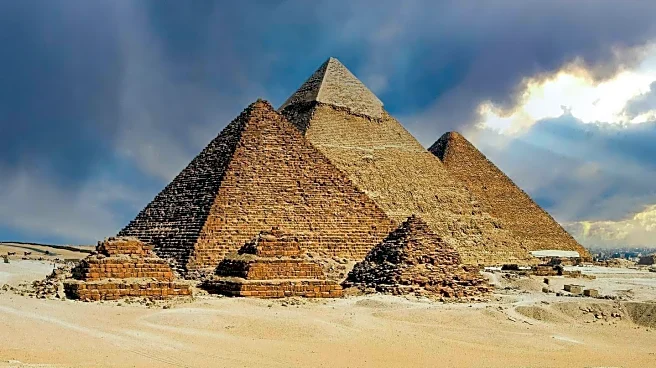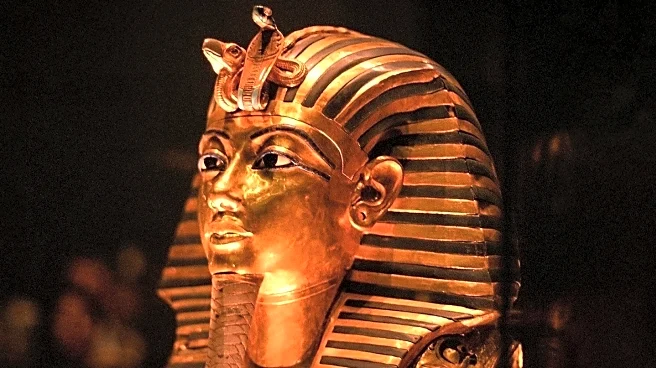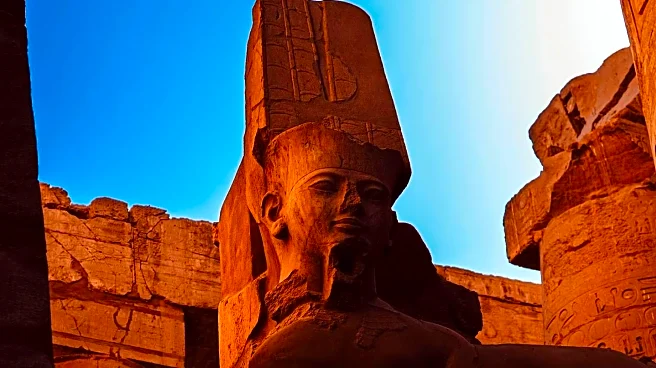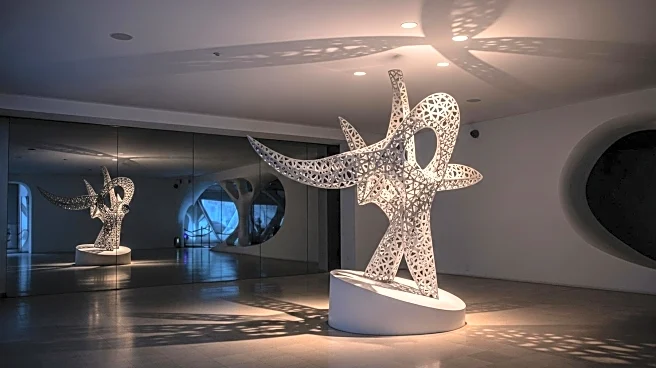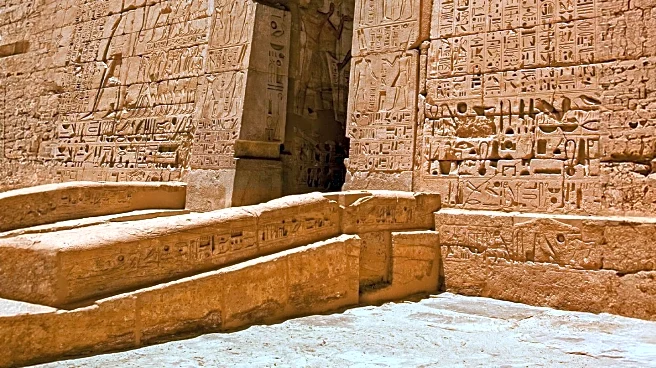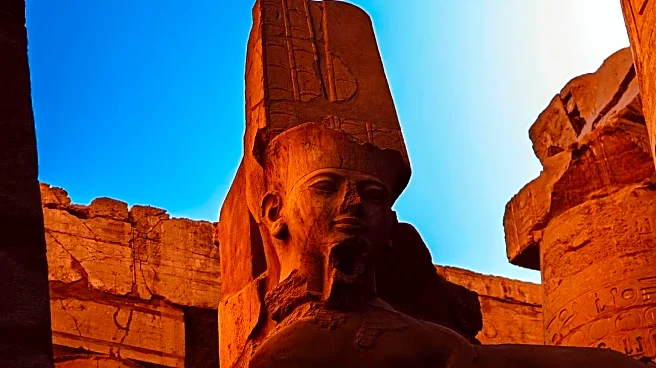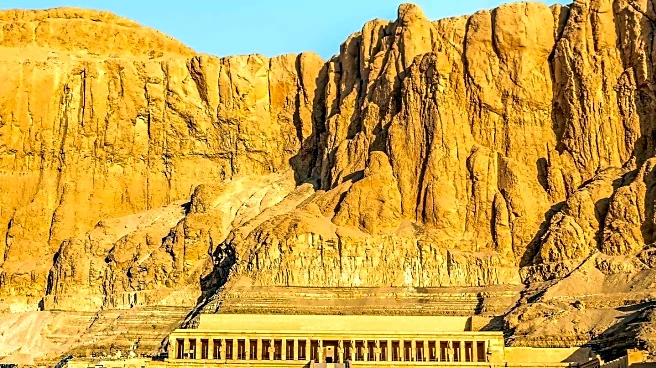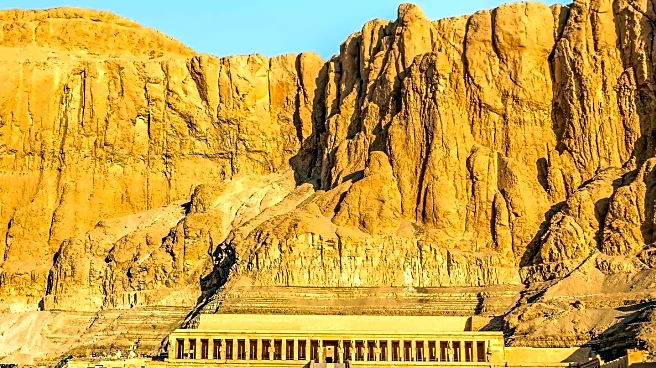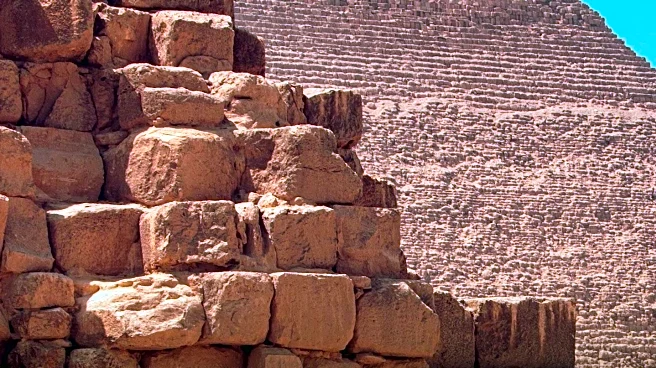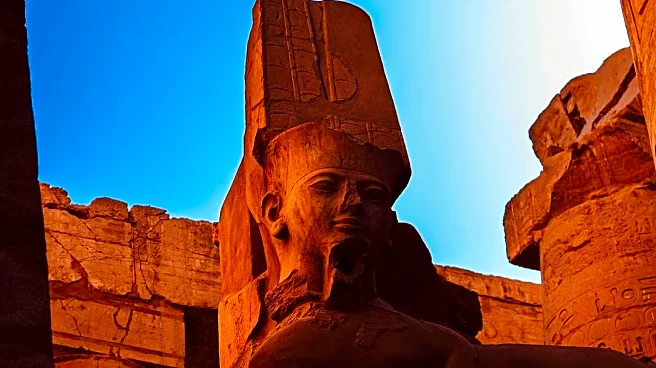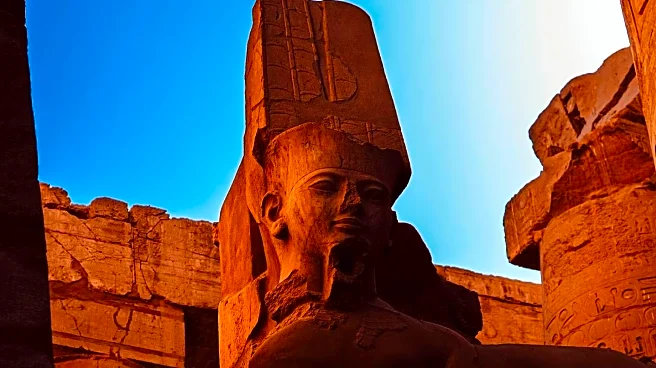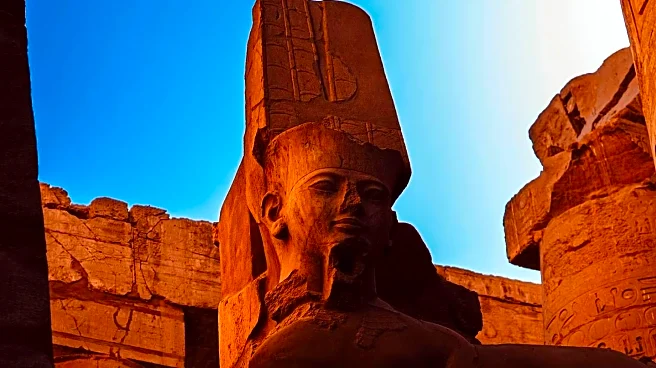What is the story about?
What's Happening?
After more than two decades of restoration, Egypt has reopened the tomb of Pharaoh Amenhotep III in the Valley of the Kings. This tomb, known as WV22, is one of the largest and most elaborately decorated in the region. The reopening was officiated by Egypt's Minister of Tourism and Antiquities, Sherif Fathy, marking a significant milestone in conservation efforts. Originally discovered in 1799, the tomb had suffered from natural degradation and looting. Its restoration involved over 260 specialists and was supported by a Japanese-funded mission in collaboration with UNESCO. The tomb's wall paintings, considered among the most exquisite of the Eighteenth Dynasty, have been preserved using non-invasive imaging technologies.
Why It's Important?
The reopening of Amenhotep III's tomb is part of Egypt's broader strategy to boost heritage tourism, which is a significant contributor to the country's GDP. By highlighting lesser-known archaeological sites, Egypt aims to diversify tourist interest and manage foot traffic more sustainably. This initiative not only preserves historical sites but also integrates them into the present, offering a more immersive experience of Egypt's ancient legacy. The project exemplifies a successful model of international collaboration in cultural conservation, balancing economic development with the preservation of historical artifacts.
What's Next?
The reopening of the tomb is expected to attract tourists seeking a deeper understanding of Egypt's ancient history. It complements other high-profile projects like the Grand Egyptian Museum in Giza. As Egypt continues to spotlight its archaeological treasures, it may see increased tourism revenue and global interest in its cultural heritage. The success of this project could encourage further international collaborations in the conservation of other historical sites.
Beyond the Headlines
The restoration of Amenhotep III's tomb highlights the importance of preserving cultural heritage in the face of modern challenges. It underscores the role of international cooperation in safeguarding historical sites for future generations. The project also reflects a growing trend in heritage tourism, where countries leverage their cultural assets to enhance economic growth while promoting global cultural understanding.
AI Generated Content
Do you find this article useful?
